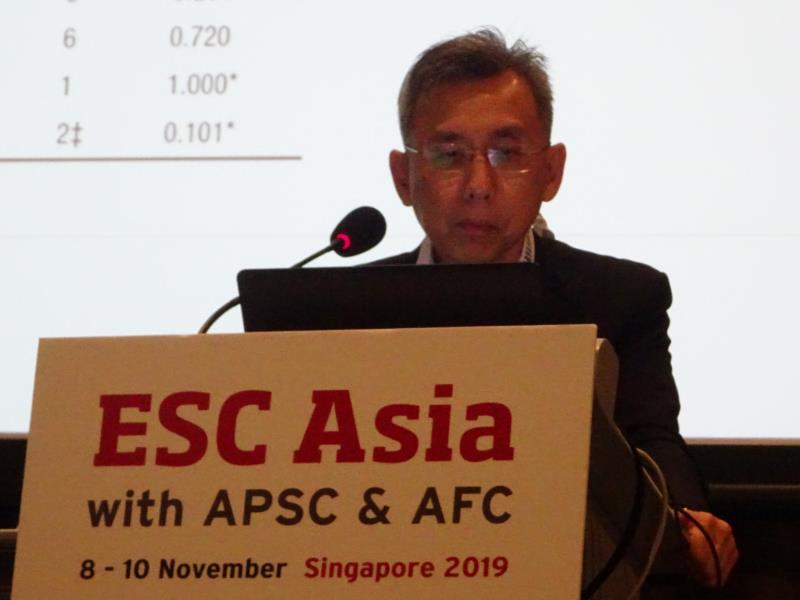 Dr Rungroj Krittayaphong from the Siriraj Hospital, Mahidol University, Bangkok, Thailand
Dr Rungroj Krittayaphong from the Siriraj Hospital, Mahidol University, Bangkok, ThailandMany patients with nonvalvular atrial fibrillation (NVAF) in Thailand use anticoagulants, but the uptake of nonvitamin-K oral anticoagulants (NOACs) remains suboptimal despite showing an upward trend, according to data from the COOL-AF registry presented at the European Society of Cardioloy (ESC) Asia Congress 2019 with APSC and AFC.
These findings point to “an unmet need [for] stroke prevention in AF in a specific group of Asian population,” given that NOACs have been proven to be beneficial, said lead researcher Dr Rungroj Krittayaphong from the Siriraj Hospital, Mahidol University, Bangkok.
Krittayaphong and his team used 2014–2017 data from the COOL-AF registry and identified 3,218 NVAF patients (mean age, 67.3 years; 58.2 percent male). Mean CHADS2, CHA2DS2-VASc and HAS-BLED scores were 1.8, 3.0 and 1.5, respectively.
The majority of the population took anticoagulants (n=2,422; 75.3 percent); the rate of use was 32.3 percent in patients with a CHA2DS2-VASc score of 0, 56.8 percent in those with a score of 1 and 81.6 percent in those with a score of ≥2. Meanwhile, only a quarter of patients were on antiplatelet therapy (n=854; 26.5 percent). [BMC Cardiovasc Disord 2018;18:174]
Interestingly, 90.9 percent of patients on anticoagulants used warfarin and only 9.1 percent used NOACs. Even then, only 41.8 percent of warfarin-treated patients had an international normalized ratio (INR) within the 2–3 therapeutic range.
In the subgroup of patients with a CHA2DS2-VASc score of ≥2 who had forgone warfarin, the common reasons endorsed for skipping treatment included current use of antiplatelet (26.6 percent) or NOACs (22.7 percent) and patient preference (23.1 percent).
“When we analysed the rate of NOAC use stratified by year of recruitment … the rate of NOAC use [increased] from 1.9 percent in 2014 to 25.6 percent in 2017,” Krittayaphong noted.
Notwithstanding the increase observed, the rate of NOAC use in the COOL AF cohort was still lower than in the GARFIELD AF registry, which was at 4.2 percent in 2010–2011 and increased to 37.0 percent in 2014–2015. [Heart 2017;103:307-314]
Moreover, event rates for adverse outcomes were similar or higher in the COOL AF vs GARFIELD AF cohort, including 1-year mortality (3.8 per 100 person-years for both), major bleeding (2.2 vs 0.7 per 100 person-years) and heart failure (3.7 vs 2.4 per 100 person-years).
According to Krittayaphong, there are several ways to prevent stroke in AF patients more safely, starting with giving preference to NOACs over vitamin K antagonists and using the HAS-BLED score to balance the benefit of stroke reduction against the risk of bleeding.
The expert also urged physicians to refrain from giving antiplatelet therapy alone or concomitantly with an oral anticoagulant without any specific indication. He pointed out that AF patients with stable coronary artery disease without a history of percutaneous coronary intervention or acute coronary syndrome within 1 year should be given oral anticoagulant without antiplatelet therapy.
Finally, Krittayaphong stressed the importance of avoiding unnecessary interruption of oral anticoagulant therapy.